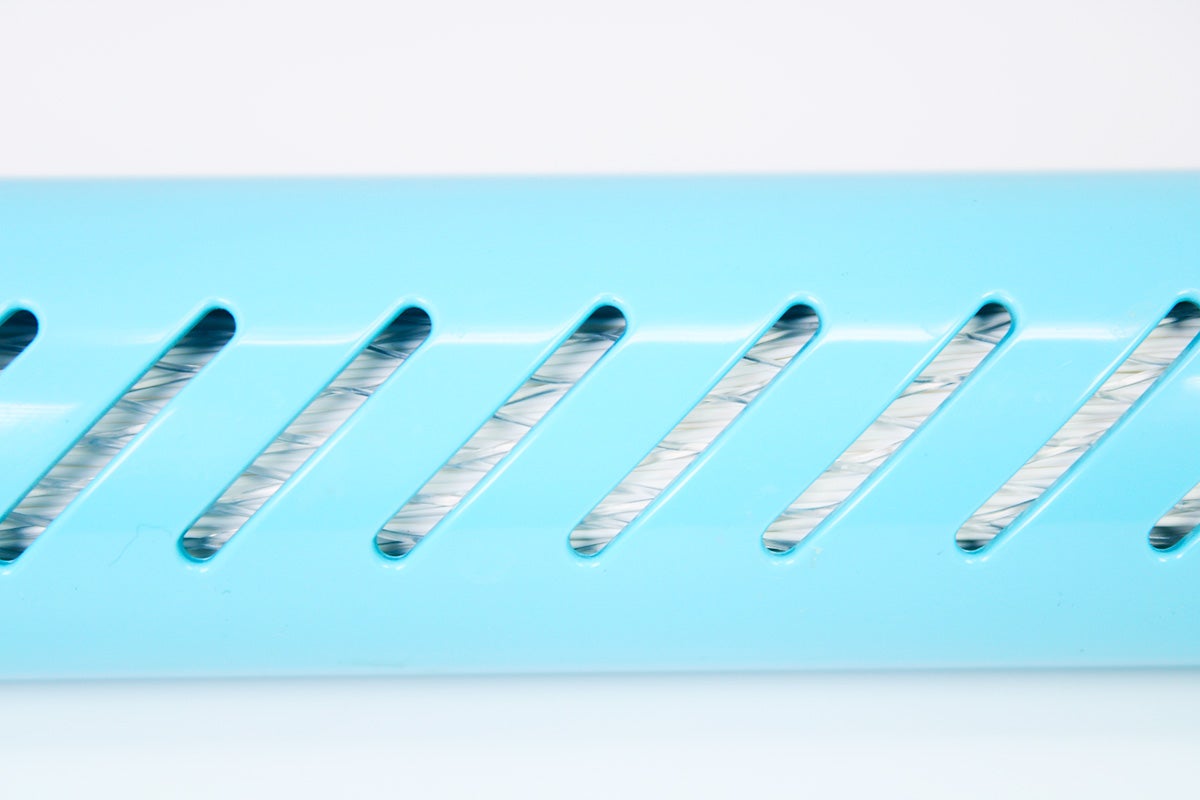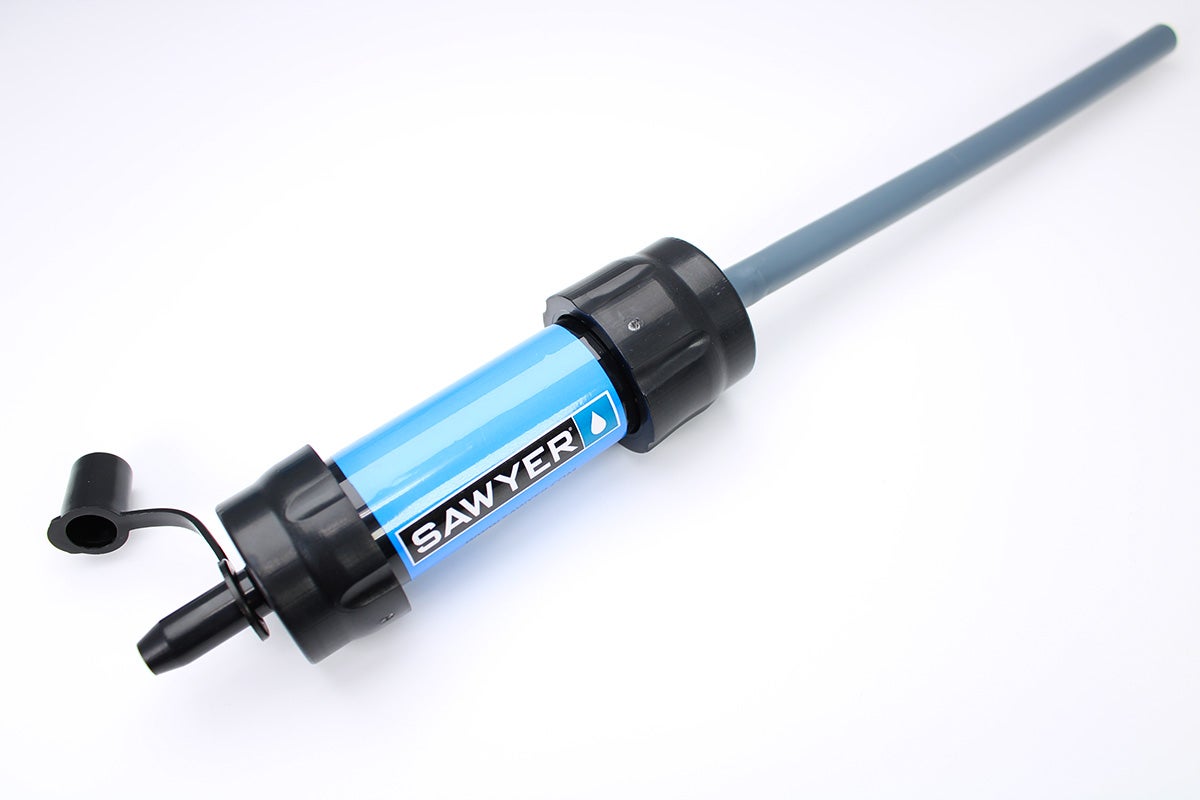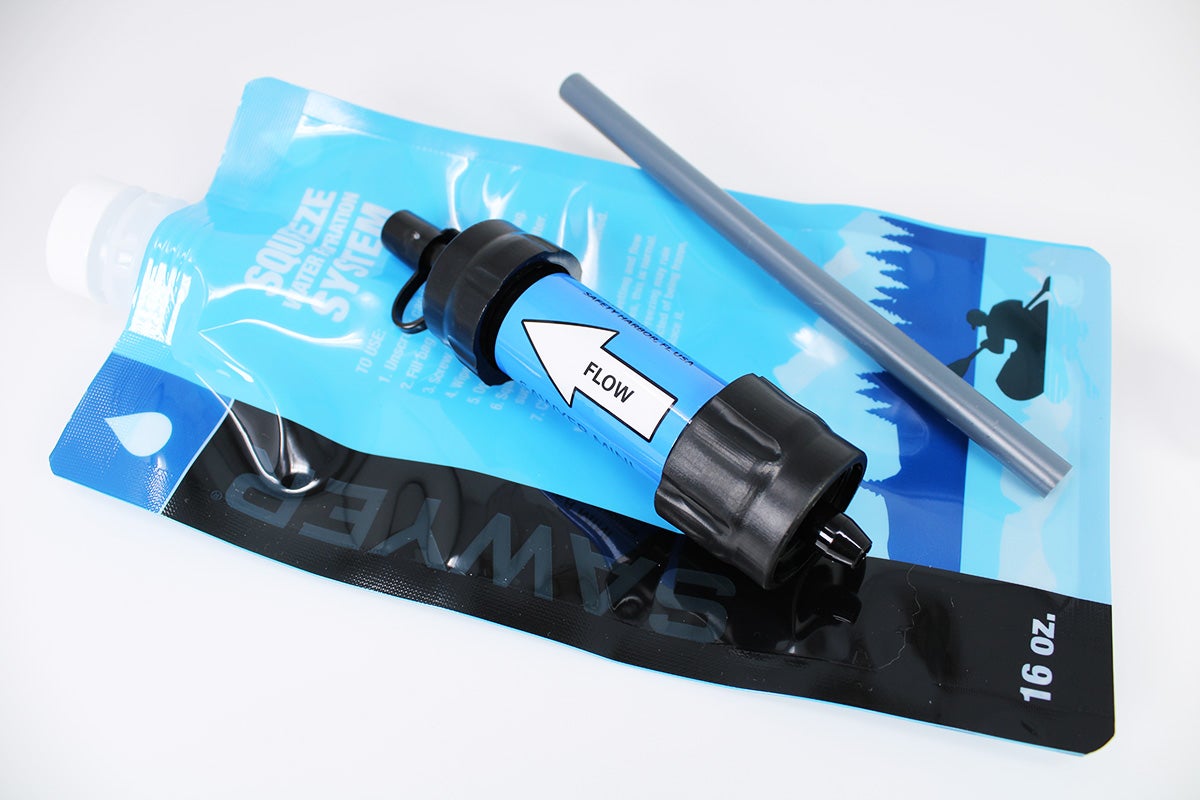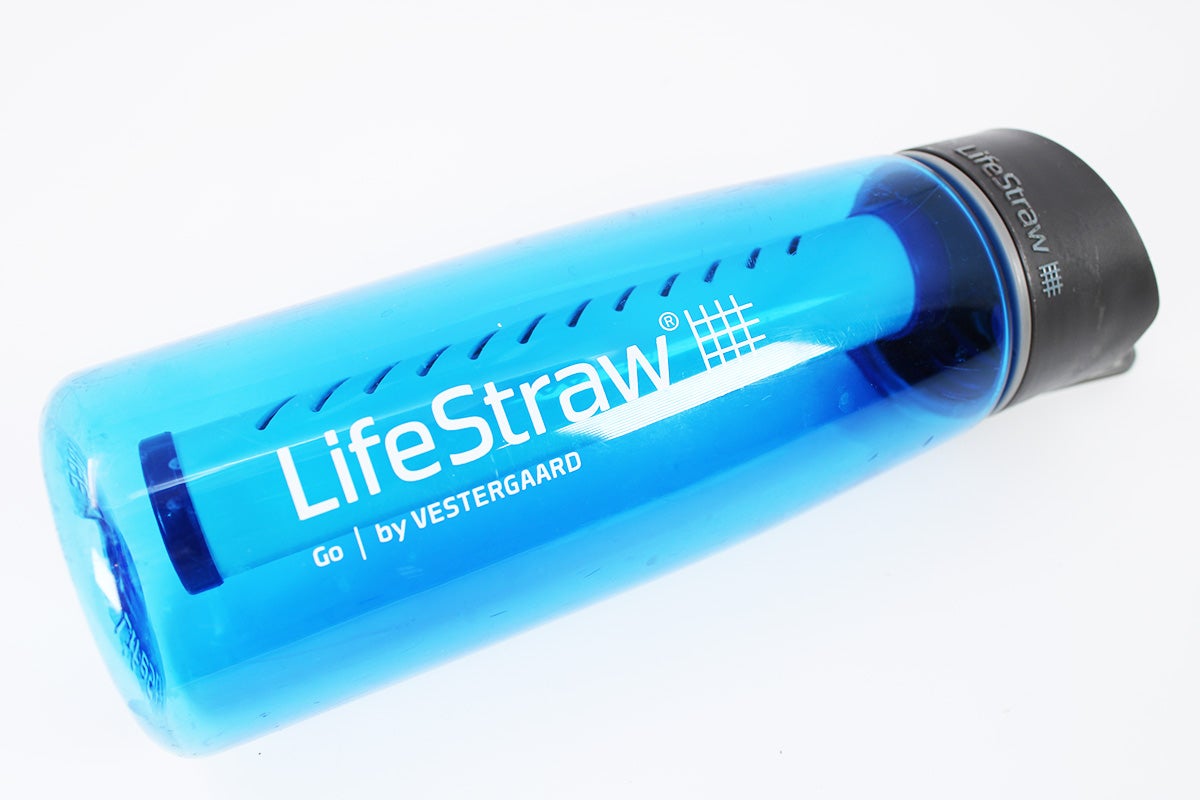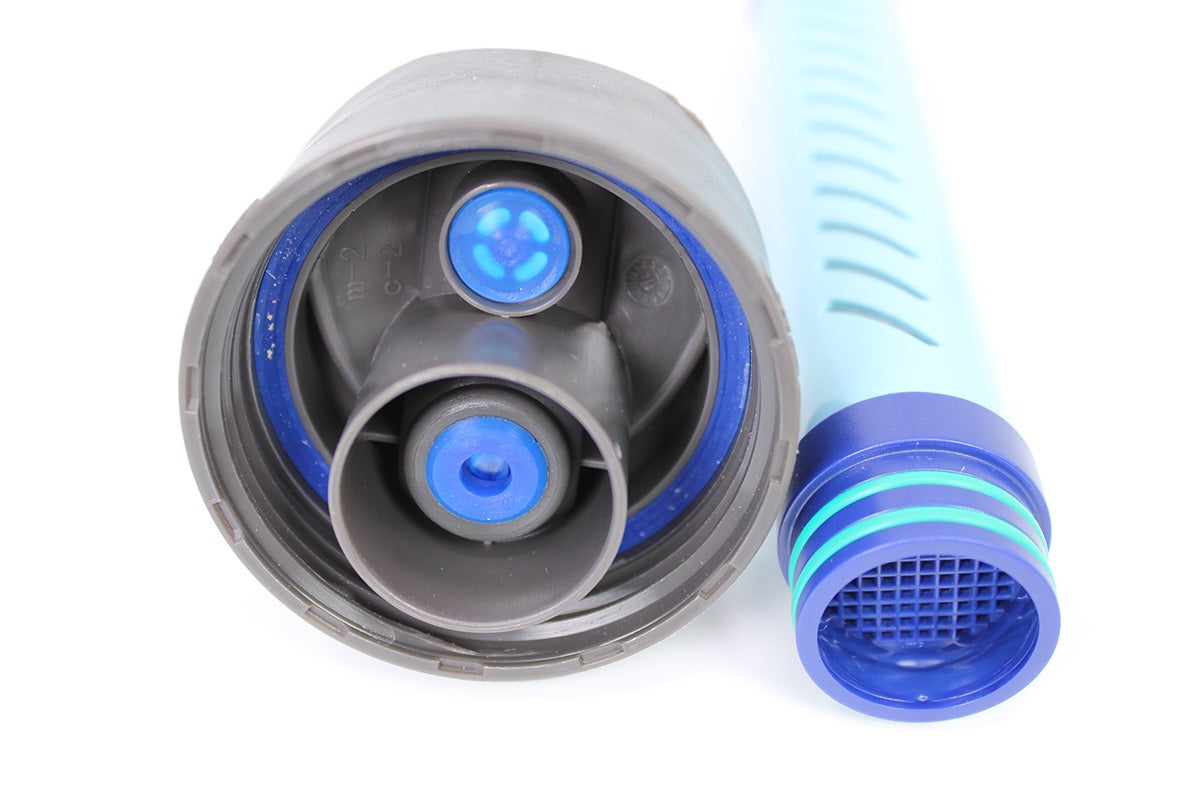Why Every Hiker Should Have a Mechanical Water Filter
Travis Olander 12.21.22
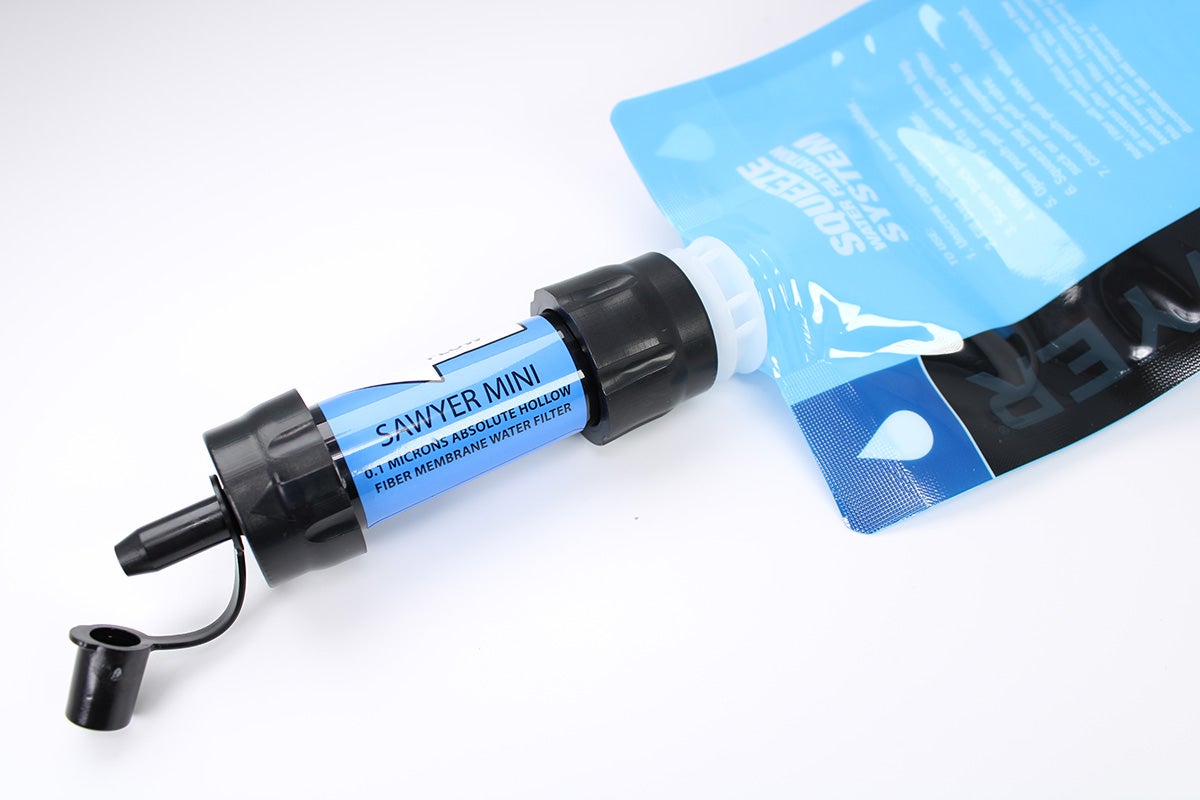
Water: Without it, you’ll die. Simple, right? Every good hiker and camper focuses on hydration first, food second, shelter third, but any experienced trailblazer knows that lugging around gallons of the wet stuff just isn’t practical. Sure, a CamelBak or big ole’ jug will get you through the first 24 or 48 hours, but if you plan on doing any sort of camping or backwoods travel beyond two days, you’ll need to obtain clean water from your environment. Drinking straight from a river or pond is a surefire way to obtain a bowel-voiding illness. That is why we answer the question of why every hiker should have a Mechanical Water Filter.
Why the Mechanical Water Filter is Best
You can boil water, or you can treat it with iodine. But neither method effectively removes particulates, sludge, tiny bugs, nor other “nasties.” Iodine toxicity is a real thing. Chemical filtration should be a last resort, used during emergencies. Plus, getting a fire started might just be too much trouble. Maybe you don’t have the time, light, resources, or energy to get wood, spend some fuel, and tend to kindling. That’s why the mechanical, micro-membrane water filter is an excellent hydration sidekick.
A membrane filter works on simple mechanics.
Microscopic organisms, bacteria, scum, and other bits are physically bigger than pure water molecules. So, if contaminated water is forced through a filter that’s only big enough to allow water molecules to pass through, then the stuff you don’t want to drink can’t get through, too. Easy.
These filters use hollow fibers. The fibers are made from special, porous composites. They’re formed with such small, microscopic holes in their structure that nothing except H2O can pass through.

In this cut-away of a single hollow fiber filter strand, you can see the tiny micro-structure. Even at 500 microns (0.01″) it’s almost impossible to see the individual holes along the outer surface of the tube, wherein water filters through, leaving behind bacteria, microscopic organisms, and scum.
Advantages of a Membrane, Mechanical Water Filter
There are plenty of reasons to invest in a mechanical membrane filter, especially if you’re rucking it on foot:
1. They Last Nearly Forever
These filters are capable of filtering between 250 and 100,000 gallons of water. For context, the average adult drinks 182 gallons of water per year. Realistically, you’ll want to replace your membrane filter before then — over time, they become more difficult to use. Which brings us to their next advantage.
2. They’re Affordable
At the time of this publication, the climate wars have yet to begin and society still functions. So, a decent membrane water filter that’s small enough for a backpack or survival bag only costs around $20 to $30. Even the weekly woodsman will have to spend months, if not years, using one of these filters on every expedition before they need to cough up some cash for a replacement.
3. They’re Easy to Maintain
Because these filters rely on simple physics to function, they’re easy to clean: After each use, just gently blow through the filter’s outlet to “pop” trapped particulates back out of the hollow fibers. There’s no need to chemically clean one of these membrane filters with soap, alcohol, or any other astringent. In fact, it’s recommended you don’t do this; it’ll probably ruin the filter.
4. They Turn any Water Clear
Boiling and chemical treatment will render water safe, but it won’t magic away all the chunks of “stuff” floating around. Nobody wants to choke down some brown, dead-bug-filled water. Membrane filters don’t allow any particulates to pass through, meaning even the nastiest water you can find will come out clear, as if it were distilled. Basically, any water that’s shy of gelatinous goo (or actual mud) will filter cleanly.
5. They’re Instant
The most popular handheld membrane water filters are on-demand, meaning they actively function while you take a drink. There’s no prep nor waiting for the filter to do its work. Some membrane filters function like giant straws that you can dip into a river, bend over, and take a sip with. Others provide a water bottle with a filter built into the cap. Simply fill the bottle with untreated water, and gulp at your leisure.
Disadvantages of a Mechanical Water Filter
Some Viruses Don’t Filter
The best membrane water filters provide 0.1-micron filtration, which is smaller than virtually all bacteria and other non-viral contaminants. But viruses are as small as 0.005 microns. Others are as large as 0.3 microns. Those would be effectively trapped, but the smallest viral strains can make it through these types of filters. If you’re paranoid about catching a virus from untreated water after filtering with a mechanical membrane, you can always spend the extra bit of time it takes to boil it for further assurance.
Flow Rates Can Be Slow
These filters rely on the user to physically pull the water through the membranes with suction. It can get annoying after a little while, but the surface area and size of the filter can mitigate this effect. Smaller, tighter filters are generally more difficult to use.
Which Membrane Filters Are Best?
This experienced hiker turns to two mechanical filters when he needs to drink nasty, turbid water without suffering the consequences:
- The Sawyer MINI
- The LifeStraw GO
The Sawyer MINI: 0.1-Micron Filter
The Sawyer MINI acts like that straw I mentioned earlier: Just dip the inlet to untreated water, and pull from the outlet with your mouth. The basic kit also includes a 16-ounce, reusable water pouch with a screw-on cap. The threads on the filter also work on most plastic water bottles.
The Sawyer MINI claims to filter “99.99999%” of all bacteria and protozoa. To the reasonable person, this means 100%. But I suppose they can’t claim that, considering they submit their filters for EPA testing and certification. The Sawyer MINI advertises a 100,000-gallon capacity. But again, you’ll probably wind up replacing it from use and abuse well before then. Read our standalone review of the Sawyer MINI to see how it performs.
The LifeStraw GO: 0.2-Micron Filter
The LifeStraw GO is my go-to membrane filter for typical hikes. This particular bottle and filter have accompanied me along the AT Trail and various Utah hikes for a few years. By now, this little unit has filtered at least a few dozen gallons of water. The filter still works like new. I’ve had no issues with blockages or failures.
The filter on the LifeStraw is fitted to the lid with O-rings to provide a seal against untreated water. Unlike the Sawyer, LifeStraw says this filter “only” lasts for about 100 liters. But that’s because the GO also contains an activated carbon filter that rests atop the membrane filter inside the core.
Functionally, the LifeStraw is pretty durable. Its bottle is made from thick polymer that’s taken its fair share of bumps and drops on rocks and logs. It hasn’t cracked on me, but LifeStraw also offers a stainless steel version.
Is 0.2 microns practically any worse than 0.1?
This writer thinks not. LifeStraw says their filters meet EPA specifications and some other “ABC 123” type of rigorous testing to ensure they remove (as LifeStraw claims) 99.999999% of bacteria, 99.999% of parasites, and 99.999% of microplastics. That’s enough 9’s for my health and safety. I’ve never gotten sick using the LifeStraw to siphon from plenty of streams and ponds. Plus, the carbon filter is added protection. Want to learn more? Check out our standalone review of the LifeStraw GO.
Which One is Better?
The Sawyer MINI is excellent if you need the smallest, lightest filter to reduce weight. I prefer using the LifeStraw. It’s just more convenient to fill up the bottle from any old water source along the way, and sip it as I walk. The flow rate on the LifeStraw is a tad less restrictive than the Sawyer, too. These handy lil’ filters are great for when you’re on the move. But home water filtration is just as important during an emergency. Check out our review of the at-home Survival Filter Water System.
